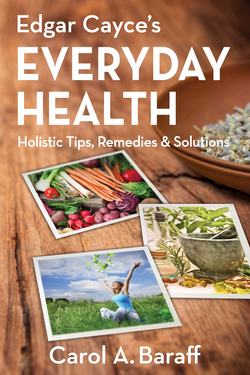Читать книгу Edgar Cayce's Everyday Health - Carol Ann Baraff - Страница 21
На сайте Литреса книга снята с продажи.
Reconciling With Ragweed
ОглавлениеThose who sniffle, sneeze, and swear their way through the annual hay fever season will probably be surprised to learn of this much-maligned herb’s important health benefits. A member of the genus Ambrosia (Latin for “food of the gods”), ragweed is a North American plant whose flowers produce copious amounts of pollen. These tiny granules are capable of bringing even strong men to their knees from around the middle of August until the first frost in October or November. As a trigger of hay fever symptoms, including sneezing, dripping nose, and itchy, watery eyes, ragweed pollen ranks number one, hands down, throughout most of the United States.
The Cayce readings are notable in finding hope for the pollen sensitive in the ragweed plant itself, said to offer its own special homeopathic form of relief. Even more exciting is the suggestion that symptom reduction may be just the tip of the therapeutic iceberg. Most of the hundred-plus readings recommending “ambrosia weed” focused on its value as an internal cleanser and tonic for the liver and related organs. Since the liver is a major detoxifying organ, the theory is that a little TLC would make it that much more effective at knocking out those nasty allergens.
Those who consulted Cayce about their hay fever were advised to start making a tea with the young, tender leaves well before the plant began to flower. One reading put it this way:
Thus, we would find in this particular season, before there is the blossoming of same, the body should take quantities of this weed. Brew same, prepare, take internally and thus war or ward against the activity of this upon the body itself . . .
These will prevent, then, the recurrent conditions which have been and are a part of the experience of the body. This will enable the body to become immune because of the very action of this weed upon the digestive system, and the manner it will act with the assimilating body, too . . .
Begin and take it through the fifteen days of July and the whole of August, daily, half a teaspoonful each day.
Thus, we will find better eliminations, we will find better assimilation, we will find better distribution of the activities of foods in the body.
5347-1
As an internal cleanser, ragweed is consistently valued for its capacity to stimulate the entire gastrointestinal system without creating a dependency. More details are found in the following reading:
Will there be taken . . . in the system, at regular intervals, those properties that are not habit forming, neither are they effective towards creating the condition where cathartics are necessary for the activities through the alimentary canal—whether related to the colon or the jejunum, or ileum—yet these will change the vibrations in such a manner as to keep clarified the assimilations, and aid the pancreas, the spleen, the liver and hepatic circulation, in keeping a normal equilibrium. These [properties] would be found in those of the ambrosia weed . . . This will aid the digestive system, will aid the whole of the eliminating system.
454-1
Readings indicating a need for liver toning suggest a variety of substitute formulas for a ragweed and licorice laxative still on the market at the time called Simmons Liver Regulator. While some of the simpler versions contain only ragweed extract and grain alcohol, others include additional ingredients such as licorice, sarsaparilla, and tolu balsam. The following comments apply to a formula in the more basic category:
. . . Where this {Liver Regulator} is given for anyone, the better preparation would be to make it out of the Ragweed, which is the basis of same . . .
And you have better than Simmons Liver Regulator for activity on the liver! This for anyone! This is the best of the vegetable compounds for activities of the liver. Of course, if made commercially we would add some few other things to it.
369-12
Finally, another highly recommended use of ragweed is as a toner of the appendix through its capacity to “. . . stimulate the gastric flow not only through the liver and gall duct but to cleanse those areas about the caecum and appendix.” (349-20) The readings regard this stimulating and cleansing effect as a powerful appendicitis preventive, stating: “If the most hated of the weeds were used {green} as a portion of the diet, it would never occur . . .” (644-1)
These are strong words of high praise for the lowly ambrosia weed, which could become one of our most loved if we gave it a chance.
